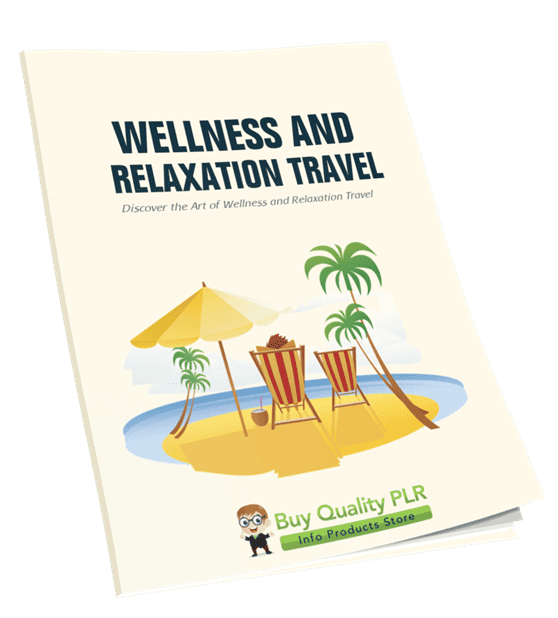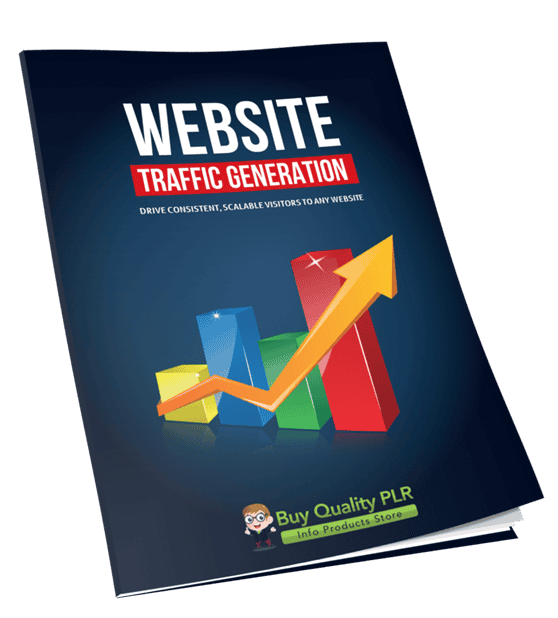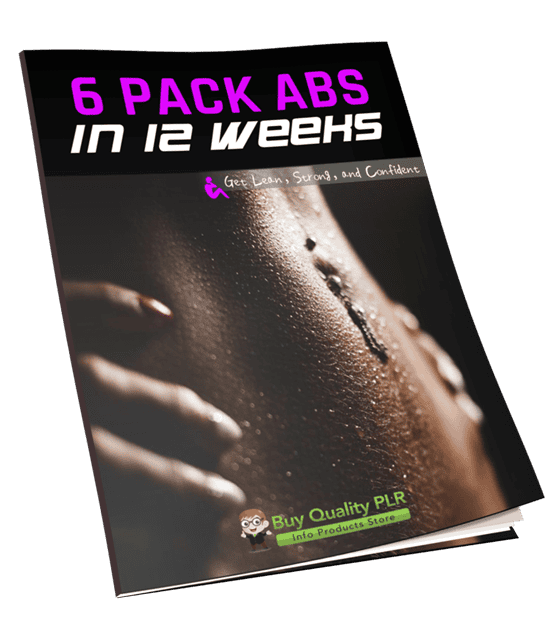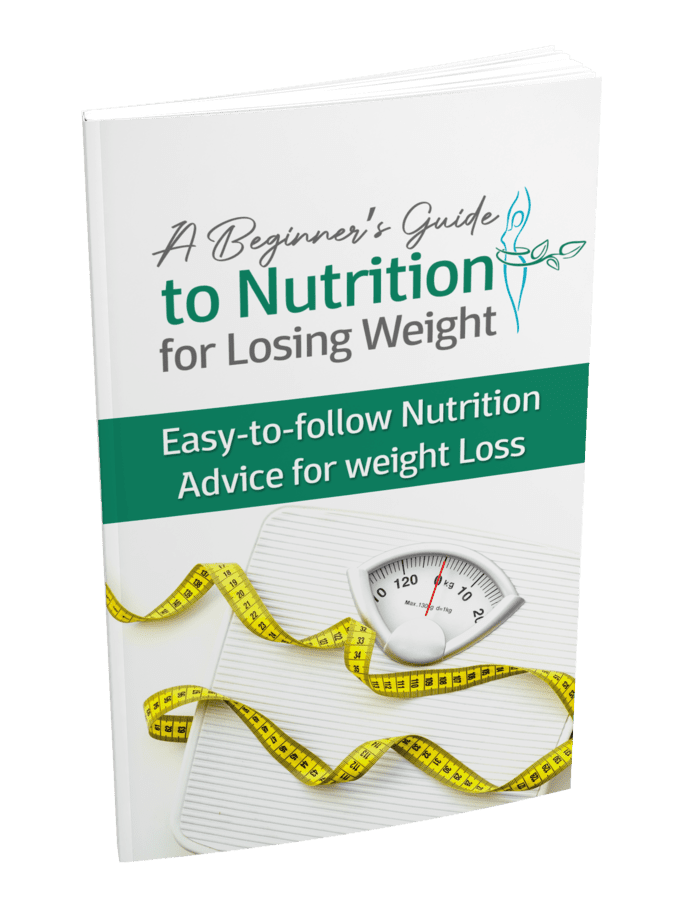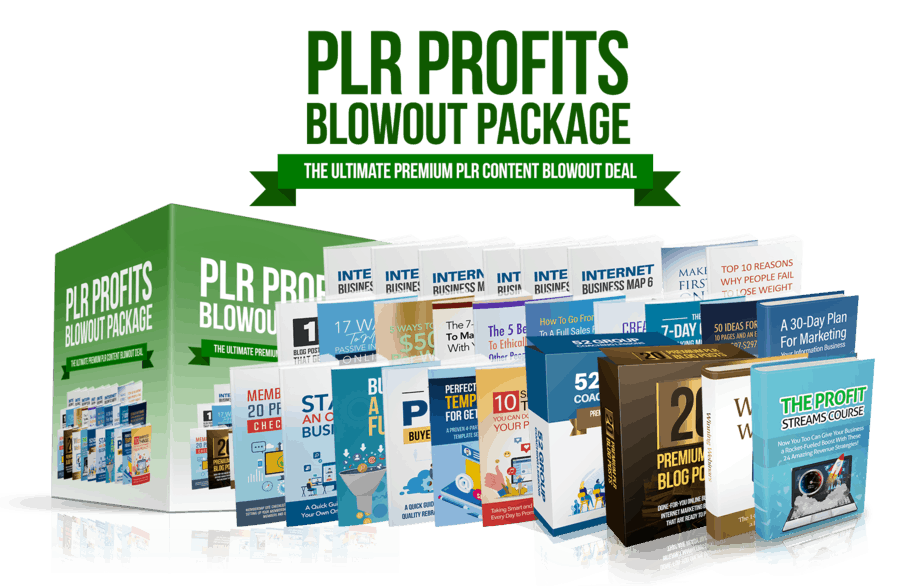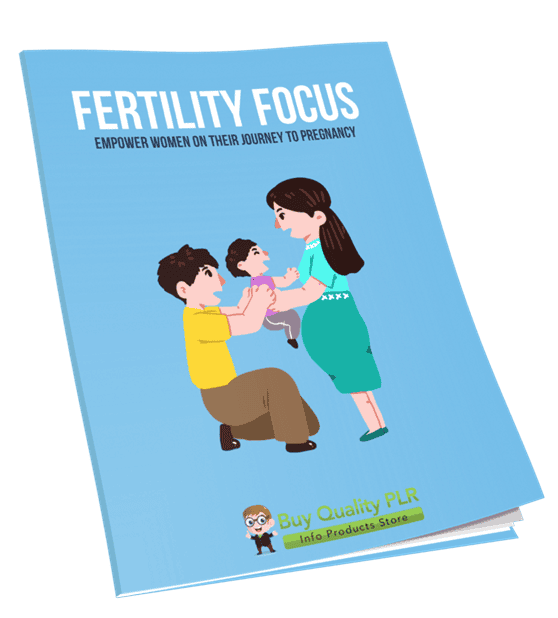
Fertility Focus PLR Course 35k Words
in Health PLR , Health PLR eBooks , Parenting , Parenting PLR , Parenting PLR Ebooks , PLR Checklists , PLR eBooks , PLR eCourses , PLR List Building Reports , Premium PLR , Premium PLR eBooks , Premium PLR Packages , Premium PLR Reports , Premium White Label Brandable PLR Coaching Courses , Private Label Rights Products , Wellness PLR , Wellness PLR eBooksChoose Your Desired Option(s)
has been added to your cart!
have been added to your cart!
#fertilityfocus #healthandwellness #parentingtips #plrcourse #reproductivehealth #wellnessmarketing #digitalproducts #womenshealth
Empower Women on Their Journey to Pregnancy with This Compassionate, Science-Backed Training
Every woman’s journey to pregnancy is deeply personal, filled with anticipation, hope, and sometimes uncertainty. The Fertility Focus PLR Course offers a comprehensive, holistic approach to preparing the mind, body, and spirit for conception and pregnancy — all written in a warm, supportive tone that connects deeply with readers.
This 5-module program blends nutrition, lifestyle, emotional wellness, and natural practices into one empowering system designed to help women feel balanced, confident, and supported throughout their fertility journey.
And with full Private Label Rights, you can rebrand and sell this powerful course as your own — helping your audience while creating a high-value digital asset for your business.
Presenting…
Fertility Focus PLR Course 35k Words
Why the Fertility & Pregnancy Niche Is So Profitable
- 🌿 Massive Market Demand: Fertility, pregnancy preparation, and women’s wellness are billion-dollar industries with growing global audiences.
- 💖 Emotionally Engaging Topic: Products that guide women through emotional and physical transformation enjoy strong trust and loyalty.
- 🧘♀️ Evergreen Appeal: The desire for natural, holistic fertility support never fades — making this a timeless income stream.
- 💼 Perfect for Coaches, Bloggers, and Health Brands: Ideal for wellness coaches, holistic practitioners, nutritionists, and digital product sellers.
Whether you sell it as a standalone digital course, a coaching program, or bundle it with other PLR health products, Fertility Focus provides incredible value and emotional resonance with your audience.
Course Overview: Fertility Focus – A Holistic Approach
This course takes learners through five carefully designed modules, each guiding them toward balance, nourishment, and emotional readiness for pregnancy.
Module 1: Preparing the Mind & Body for Pregnancy
Set the foundation for fertility and inner calm.
- Lesson 1: Cultivating a Positive Mindset
Teaches how stress and negative emotions impact fertility — and introduces mindfulness, affirmations, and visualization for calm confidence. - Lesson 2: Balancing Hormones Naturally
Explains how everyday habits influence hormones and how to restore balance with better sleep, relaxation, and reduced toxin exposure. - Lesson 3: Nutrition as a Foundation
Covers fertility-boosting nutrients like folate, iron, and omega-3s, plus easy swaps for better hormonal and reproductive health. - Lesson 4: Creating a Daily Wellness Routine
Encourages hydration, light movement, and self-care rituals that support hormonal balance and relaxation.
Outcome: Learners will understand how to align their mental, emotional, and physical state for conception success.
Module 2: Nourishing the Body Through Nutrition
Fuel fertility with whole, nutrient-rich foods.
- Lesson 1: Fertility Superfoods to Embrace
Lists powerful foods (leafy greens, berries, lentils, seeds) that boost hormone health and egg quality. - Lesson 2: Foods to Limit or Avoid
Educates on substances that hinder fertility, including processed sugars, trans fats, and excess caffeine or alcohol. - Lesson 3: Meal Planning for Fertility Health
Provides an easy guide to creating nourishing weekly meal plans that balance macros and reduce inflammation. - Lesson 4: The Role of Hydration
Shows how proper hydration and herbal teas help regulate cycles and support a healthy reproductive system.
Outcome: Learners will build a simple, sustainable fertility nutrition plan that supports conception naturally.
Module 3: Movement & Mind-Body Connection
Discover gentle ways to move, relax, and restore balance.
- Lesson 1: Gentle Exercise for Fertility & Pregnancy
Explains safe, circulation-boosting exercises like yoga, walking, and stretching that promote hormone balance. - Lesson 2: Yoga & Breathing Practices
Introduces fertility-focused yoga postures and calming breathwork to reduce stress and improve reproductive flow. - Lesson 3: Stress Management & Relaxation
Provides tools like meditation, grounding, and journaling to reduce cortisol and increase receptivity. - Lesson 4: Sleep & Restorative Habits
Offers sleep hygiene strategies for deep rest and optimal hormonal regulation.
Outcome: Learners develop emotional and physical harmony to support both conception and pregnancy.
Module 4: Emotional & Spiritual Well-being
Nurture inner peace and emotional resilience.
- Lesson 1: Embracing Emotional Support
Highlights the value of community, therapy, and open communication with partners and loved ones. - Lesson 2: Mindset Shifts & Affirmations
Teaches self-love, optimism, and affirmation techniques for nurturing a hopeful mindset. - Lesson 3: Connecting Spiritually with Your Journey
Encourages mindfulness, meditation, or prayer to strengthen inner faith and self-connection. - Lesson 4: Journaling for Healing & Growth
Guides learners to express emotions and reflect through structured journaling prompts.
Outcome: Learners will feel emotionally centered and spiritually grounded throughout their fertility journey.
Module 5: Creating a Nurturing Lifestyle for Pregnancy
Transition smoothly from fertility to pregnancy and motherhood.
- Lesson 1: Building a Supportive Environment
Helps women design a calm, safe home environment that encourages joy and rest. - Lesson 2: Partner & Relationship Connection
Focuses on strengthening communication, empathy, and shared responsibility during this life-changing stage. - Lesson 3: Preparing for Motherhood Holistically
Introduces self-care rituals, natural birthing options, and gentle planning for postpartum recovery. - Lesson 4: Long-term Wellness & Joyful Living
Encourages lasting balance through nutrition, mindfulness, and joyful daily habits.
Outcome: Learners complete the course feeling empowered, emotionally supported, and ready for motherhood.
What’s Included in the PLR Package
When you purchase the Fertility Focus PLR Course, you get a complete, ready-to-sell digital product bundle:
- 🌸 33,681-Word Main Course – 5 detailed modules, 20 lessons, holistic and actionable.
- 📝 Fertility Focus Checklist (477 Words) – A clear, printable guide to keep learners on track.
- 💬 Fertility Focus FAQs (832 Words) – Answers to common fertility and pregnancy wellness questions.
- 💻 Done-For-You Sales Page (812 Words) – Professionally written copy to help you launch fast.
- 📜 Full Private Label Rights License – Edit, rebrand, and sell for 100% profit.
Who Can Benefit from This Course
This course is perfect for:
- Fertility Coaches – Provide clients with a structured, holistic system.
- Health & Wellness Coaches – Add value to your programs or memberships.
- Holistic Practitioners & Nutritionists – Teach natural fertility care.
- Bloggers & Influencers – Sell digital fertility guides under your brand.
- Course Creators – Offer it as a premium women’s wellness training.
- E-commerce Entrepreneurs – Add it to your PLR or digital health store.
How to Profit from Fertility Focus PLR Course
- Sell It as a Premium Course – Offer it on your website or course platform for $97–$297.
- Turn It into a Video Program – Record video or audio versions and sell for $297–$497.
- Bundle with Other PLR Courses – Combine with related topics like mindfulness, hormones, or nutrition.
- Offer It as a Lead Magnet Funnel – Give away Module 1 to capture leads and upsell the full course.
- Add to a Membership Site – Use as premium content for recurring monthly subscribers.
- Create Mini Ebooks or Workshops – Sell each module as an individual guide or mini-course.
- Start a Coaching Program – Use the modules as your core curriculum for 1:1 or group sessions.
- Flip It for Profit – Rebrand, launch as a turnkey wellness course site, and sell it for a higher price.
License Terms
You CAN:
✅ Edit, rebrand, and sell as your own product.
✅ Convert into audio, video, or printed format.
✅ Add to paid membership sites or course bundles.
✅ Use sections as blog posts, lead magnets, or emails.
You CANNOT:
❌ Give away the full course for free in its current state.
❌ Pass PLR or resale rights to your buyers.
❌ Offer 100% affiliate commissions (max 75%).
❌ Include the course in an already-paid bundle without a new purchase.
Why This PLR Course Sells
- 💫 Emotional Connection: Written in a supportive, heart-centered voice.
- 🌸 High-Value Niche: Fertility and pregnancy preparation are profitable and evergreen.
- 🧘♀️ Comprehensive Curriculum: Mind, body, nutrition, and emotional wellness in one course.
- 🕊️ Transformational Results: Empowers women with actionable steps and mindset shifts.
- 💡 Ready to Launch: Done-for-you sales copy and assets make it easy to sell immediately.
Start Empowering Women & Growing Your Business
With the Fertility Focus PLR Course, you’re not just selling content — you’re offering hope, guidance, and empowerment to women everywhere.
And best of all, it’s ready to sell, teach, or brand as your own.
You’ll Receive:
🌸 33,681-Word Course
📝 Checklist
💬 FAQs
💻 Done-for-You Sales Page
📜 Full PLR License
Help women embrace a calm, confident, and natural journey to motherhood — while building a profitable brand in the holistic wellness space.
💖 Get Instant Access to the Fertility Focus PLR Course Today!
has been added to your cart!
have been added to your cart!
Here A Sample of the Fertility Focus PLR Course
Module 1: Preparing the Mind & Body for Pregnancy
Lesson 1 – Cultivating a Positive Mindset
(A step-by-step instructor guide for international course creators)
International signs used in this lesson: • (bullet) — (em dash) → (arrow)
Lesson overview (what this lesson is and why it matters)
This lesson helps participants understand how stress, anxiety and persistent negative thinking can influence reproductive health and early pregnancy, and it trains them in two practical, low-barrier tools: affirmations and guided visualization. The design is classroom-ready and adaptable for online delivery, and it is written for instructors working across cultures and languages. Keep the tone compassionate, nonjudgmental and practical.
Primary purpose — reduce immediate distress, increase self-efficacy and give participants simple tools they can use daily. Emphasize that mindset practices support overall wellbeing and are one part of a holistic fertility approach.
Learning objectives (by the end of the lesson participants will be able to)
• Describe, in plain language, how prolonged stress affects physical and emotional readiness for pregnancy.
• Lead and follow a short calming breath and body-awareness exercise.
• Compose one brief, believable affirmation and practice it aloud or silently.
• Experience a guided visualization and reflect on one change in mood, tension, or attention.
Timing, format & group sizing
• Total recommended length: 75–90 minutes. For time-limited formats, compress to 45–60 minutes by shortening practices to 3–4 minutes each.
• Group size: 6–30 participants. For larger groups, use breakout rooms, pair shares or multiple facilitators.
• Delivery modes: in-person (circle seating), live online (video + breakout rooms), asynchronous (recorded guided practices + short reflective prompts).
• Materials: one-page handout, soft timer, optional low-volume background audio, chairs or mats, translation cards if needed.
Instructor preparation (what to do before the session)
• Read this lesson script through and practice the guided exercises until you can lead them calmly and naturally.
• Prepare a one-page handout with the breathing pattern, a short sample visualization script and 12 sample affirmations translated appropriately.
• Prepare an opt-out statement and a private signal for participants who may need to pause.
• If online, test audio, set breakouts, and plan for captions/transcripts. If working across languages, recruit a co-facilitator or translator when possible.
Step-by-step session plan (scripted and ready to use)
1. Opening & setting intention (7–10 minutes)
• Script to say: “Welcome. Today we’ll explore how emotions and thoughts connect to the body, and we’ll practice simple tools you can use anytime to reduce stress. Everything is optional. If anything feels uncomfortable, please do what’s best for you.”
• Activity: 30-second silent internal check — ask participants to notice breath and one word that describes their current feeling. No sharing required.
• Facilitation tip: Use inclusive language — e.g., “people preparing for pregnancy” — unless the group requests otherwise.
2. Brief, plain-language explanation (10 minutes)
• Script to say: “When we are stressed for long periods, our body shifts into a protective state. That’s useful in danger, but when it’s constant it can change sleep, digestion and hormonal signals. These changes make it harder to feel steady during fertility and early pregnancy. Mind-body practices don’t replace medical care, but they help reduce stress and improve focus and self-care.”
• Keep this short, with 3 clear points: what stress does, why easing stress matters, and what this lesson will teach.
3. Grounding breath + micro body scan (8–12 minutes)
• Explain: “This is a short practice to calm your nervous system. It takes under five minutes.”
• Instructions (spoken clearly):
→ Sit comfortably with feet on the floor or lie down if preferred.
→ Inhale slowly for 4 counts — hold gently for 1 count — exhale for 6 counts. Repeat for 4 rounds.
→ After the rounds, do a quick mental scan: crown → shoulders → belly → hips → legs → feet. Name sensations without trying to change them.
• Facilitation cues: count softly; remind participants they can adjust timing; offer alternative counts for breathers who need it (e.g., 3:1:4).
• Purpose: immediate down-regulation of stress response and increased interoceptive awareness.
4. Teaching affirmations: principles + guided creation (12–15 minutes)
• Quick teaching points:
• Affirmations are short, positive, present-tense statements.
• Keep them believable and kind — tiny truths are more effective than implausible claims.
• Use “I” statements and focus on qualities or actions (calm, resilient, caring), not outcomes you can’t control.
• Examples to show (read slowly):
• “My body is doing its best for this journey.”
• “I am learning to rest when my body needs it.”
• “I give myself patience and compassionate care.”
• Guided creation exercise (script to read):
→ Ask everyone to write for two minutes: finish the sentence “I am…” or “I give myself…”.
→ Invite participants to choose one phrase they can comfortably believe, shorten it to 5–8 words, and say it silently three times.
→ If comfortable, invite one repetition out loud (optional).
• Facilitation notes: for low-literacy groups, speak examples and ask participants to repeat. For groups preferring written work, provide pens and paper.
5. Guided visualization (10–15 minutes) — full script for facilitators
Use calm, descriptive language; avoid prescriptive imagery tied to specific religions or cultures. Offer non-visual alternatives for those who do not visualize easily.
Script (read slowly):
• “Make yourself comfortable. Close your eyes if that feels safe, or soften your gaze. Bring your attention to the breath — gentle in, gentle out. Imagine a place where you feel safe and at ease. It might be a real place you know or a place you imagine. Notice what you can see there — wide sky, a quiet room, a garden path. Notice sounds — maybe a breeze, distant water, the hum of life. Feel the ground supporting you; sense warmth or a light breeze on your skin. Now imagine your body here, breathing easily. With each breath, feel a little more ease in the chest and belly. Picture gentle, soft light filling the area where life grows — imagine warmth, circulation and quiet presence. If thoughts come, thank them and let them float past like clouds. Stay with the sense of safety for a few more breaths. When you are ready, bring your attention back to the room; gently move your fingers and toes and open your eyes.”
• After the visualization, allow 60–90 seconds of quiet to reorient.
6. Pair-share reflection (12–15 minutes)
• Prompt options (choose 1–2):
• “What did you notice in your body during the breath or visualization?”
• “Which affirmation felt most honest or useful?”
• “Was anything surprising or comforting about the practice?”
• Structure: 2 minutes silent journaling → 6 minutes pair share (3 minutes each) → 4–7 minutes large group debrief (voluntary sharing).
• Facilitator role: model brief responses, invite observant listening, and gently redirect anyone who dominates.
7. Closing, safety reminder & brief Q&A (5–8 minutes)
• Script: “Thank you for practicing today. These exercises are tools you can use any time. If any practice stirred difficult emotions, please take care of yourself and reach out to a trusted support. I’m available after class for private check-ins.”
• Offer one or two local or institution-specific resources if appropriate (mental-health contacts), but avoid giving medical advice.
Safety, trauma sensitivity & accessibility (non-negotiables)
• Begin with a clear opt-out: “You may rest, open your eyes, or step out at any time.”
• Use invitational language not commands.
• Provide multiple ways to engage (speak, write, listen, move).
• For trauma survivors: avoid language that implies control over bodily processes and avoid sensory prompts tied to traumatic memories. Offer grounding alternatives (name five things you can see, four you can touch).
• Accessibility: provide captions/transcripts for online sessions; offer large-print handouts and tactile cues where needed.
Cultural adaptation & translation tips for international classrooms
• Avoid idioms and metaphors that do not translate literally. Use plain verbs and short sentences.
• Provide a glossary of terms (e.g., “visualization,” “interoception,” “nervous system”) in local languages.
• Be mindful of religious and cultural norms around meditation and visualization; offer secular framing (“relaxation practice”) where helpful.
• Invite local co-facilitators to adapt imagery (e.g., swap a beach for a familiar local landscape).
Quick facilitator cues & phrases (ready to use)
• “If you feel any discomfort at any time, please rest or open your eyes.”
• “There’s no right or wrong way to do this practice.”
• “If you don’t visualize, focus on a sound or a memory instead.”
• “Keep your affirmation short and believable; small shifts matter.”
Sample one-page handout content (for translation)
• Breathing pattern: inhale 4 — hold 1 — exhale 6 (repeat 4 times).
• Affirmation template: “I am [quality]” or “I give myself [care/action].”
• Short visualization cue: “Imagine a safe place. Notice sight, sound, touch. Picture calm support around your body.”
• Safety note: “Everything is optional. If upset, stop and use grounding skills.”
Measurement & simple evaluation (how to know the lesson worked)
• Quick self-report poll at the end: “On a scale of 1–5, how calm do you feel now compared to before the class?”
• Observe participation: silence with closed eyes during exercises usually indicates engagement.
• Collect one brief reflective sentence in chat or on paper: “One thing I noticed…” — this gives evidence of learning and emotional shift.
Final instructor reminder
Keep the session short, culturally sensitive and trauma-aware. Emphasize simple, repeatable practices participants can use alone. Your calm presence and the way you invite participation matter more than polished language or advanced techniques. Aim for warmth, clarity and small, believable steps toward greater calm and self-compassion.
Lesson 2 – Balancing Hormones Naturally
(A step-by-step instructor guide for international course creators)
International signs used in this lesson: • (bullet) — (em dash) → (arrow)
Lesson overview (what this lesson is and why it matters)
Hormones act as chemical messengers that coordinate sleep, mood, metabolism, menstrual cycles and early pregnancy processes. Small, sustainable lifestyle changes can help people keep hormonal systems functioning more smoothly. This lesson gives facilitators a clear, culturally adaptable script and practical exercises to teach participants how sleep, stress, movement, nutrition and environmental choices influence hormones — all delivered in plain language and with trauma-aware options.
Keep the tone supportive: present information as empowering lifestyle tools rather than medical prescriptions. Remind learners that this material is educational and not a substitute for individualized medical care.
Learning objectives (participants will be able to)
• Explain in simple terms how sleep, stress, nutrition, movement and environment affect hormonal balance.
• Apply at least two practical sleep and relaxation strategies to improve hormonal regulation.
• Identify common household items that may contain endocrine disruptors and list practical avoidance strategies.
• Build a one-week, realistic plan that supports healthy cycles using small, repeatable habits.
Timing, format & group sizing
• Total recommended length: 75–90 minutes. Compress to 45–60 minutes for short sessions by shortening practice segments.
• Group size: 6–30 participants. Larger groups work in breakouts for practice tasks.
• Delivery modes: in-person circle, live online with breakout rooms, or blended (recorded micro-lessons + live Q&A).
• Materials: one-page handout, flipchart or slides with simple diagrams, pens, sticky notes, optional sample products for demonstration (labels only).
Instructor preparation (before the session)
• Practice the scripts and the short sleep and relaxation exercises until you can lead them smoothly.
• Prepare a one-page handout translated into the primary languages of your learners, with easy tips and a short habit planner.
• Prepare a safety script and opt-out option for any relaxation or movement activities.
• If showing product examples (e.g., plastic types), collect examples or clear photos ahead of time.
Step-by-step session plan (scripted and reusable)
1. Welcome and framing (5–7 minutes)
• Say: “Welcome. Today we’ll explore how daily choices affect hormones that matter for fertility and pregnancy. We’ll focus on small, practical actions you can use right away. Everything is optional and we will not offer medical advice here.”
• Activity: quick one-word check-in — ask each person to name one word that describes their sleep or energy this week.
2. Plain-language mini-science (10–12 minutes)
• Script: “Hormones are like messages traveling in the body. Sleep helps reset those messages each night. Chronic stress can change how messages are sent. Food, movement and chemicals in our environment also change how well messages are heard. Today we’ll learn simple ways to support clearer messaging.”
• Keep it short and avoid technical jargon. Use an analogy: “Think of hormones as a mail system — good sleep and regular meals help the post run on time.”
3. Sleep hygiene micro-workshop (15–18 minutes)
• Teach a short list of practical, culturally adaptable sleep habits: consistent sleep window, wind-down routine, limiting screen use before bed, cool and dark sleeping area, short daytime naps (if culturally acceptable). Emphasize feasibility — pick one habit to try this week.
• Short practice: lead a 4-minute pre-sleep relaxation — slow breathing (inhale 4, hold 1, exhale 6) plus progressive relaxation from feet to head.
• Script for the practice: “You can do this lying down or sitting. Breathe slowly. Imagine softening each part of the body as you exhale.”
• Facilitation notes: Offer non-visual cues for those who prefer sound-based or tactile options.
4. Nutrition foundations for hormonal balance (15–18 minutes)
• Key teaching points (plain language):
• Regular meals support stable blood sugar and hormone rhythms.
• Include protein, healthy fats and fiber at meals to support reproductive hormones.
• Minimize highly processed foods and excess added sugar; they can cause energy swings.
• Hydration matters — sipping water throughout the day helps digestion and elimination.
• Activity — meal mapping: give participants 5–7 minutes to map a typical day’s meals and identify one small swap (e.g., adding a boiled egg, a handful of nuts, or an extra vegetable). Share in pairs.
• Facilitation tip: avoid strict or prescriptive diet language. Encourage culturally familiar foods and local availability.
5. Movement and gentle circulation (8–12 minutes)
• Teach the value of consistent gentle movement: walking, pelvic tilts, light strength work and gentle yoga can help circulation, insulin sensitivity and mood.
• Short movement: lead a 5-minute gentle standing routine — shoulder rolls, hip circles, ankle pumps, slow side bends. Keep it accessible for all fitness levels.
• Script: “Move in a way that feels good and sustainable. Aim for short bouts across the day rather than one long, intense session.”
6. Stress reduction and relaxation practices (8–12 minutes)
• Teach brief stress tools that can be used anywhere: box breathing, 5-4-3-2-1 grounding, 1-minute body scan, and progressive muscle relaxation.
• Practice one technique live (e.g., 5-4-3-2-1 grounding): ask participants to name silently 5 things they see, 4 they can touch, 3 they hear, 2 they smell, 1 they taste or sense.
• Emphasize building tiny habits — 60 seconds before a meal or at bedtime.
7. Practical avoidance of endocrine disruptors (10–12 minutes)
• Plain explanation: some chemicals in plastics, personal care items and consumer products can act like hormones or interfere with them. Small changes lower daily exposure.
• Practical, safe suggestions to teach (easy to adapt by region):
• Prefer fresh or frozen whole foods over canned when possible, and avoid heating food in plastic.
• Use glass, stainless steel or enamel for food storage and water bottles when possible.
• Choose fragrance-free personal care products or read ingredient lists; keep products simple.
• Reduce use of non-stick cookware that is flaking; choose good-condition cookware.
• Wash hands before eating, especially after handling receipts or using hand sanitizer heavily.
• Activity: product label scavenger — in small groups, review sample labels or photos and list one change the household could make.
• Facilitation note: avoid alarmist language. Focus on feasible, low-cost swaps and emphasize progress over perfection.
8. Habit planning and reflection (8–10 minutes)
• Guide participants to create a one-week plan with one small goal from each area: sleep, a food swap, short movement, and one environmental change. Use sticky notes or a small planner.
• Pair share: 2 minutes each to describe chosen goals and one barrier, with the partner suggesting a practical solution.
9. Closing, safety reminder & Q&A (5–8 minutes)
• Script: “Thank you. These are practical habit tools to support hormones and general wellbeing. If you have medical concerns or irregular cycles, please consult your healthcare provider for personalized care.”
• Offer brief Q&A. Remind participants of opt-out and available support resources.
Safety, medical disclaimers & accessibility
• Clear disclaimer: “This lesson is educational. It does not replace medical advice. Participants with medical conditions, on medication, or who are pregnant should consult a healthcare provider before making major changes.”
• Trauma-informed delivery: use invitational language, offer seated or standing options, and avoid sensory prompts that might trigger.
• Accessibility: provide slides with large font, translated handouts, transcripts for recorded sections, and options for verbal or written participation.
Cultural adaptation & translation tips for international classrooms
• Use local food examples and familiar movement patterns. For instance, suggest local whole grains, legumes, fruits or cooking styles when discussing nutrition.
• Avoid idioms and culturally specific metaphors. Use short sentences and concrete verbs so translators can adapt easily.
• Respect cultural norms about sleep, napping, and personal care; present multiple options and ask participants to choose what fits their lifestyle.
• Invite local co-facilitators to adapt examples and product suggestions.
Common participant questions (with suggested facilitator responses)
• Q: “Can I fix hormone imbalance with these tips alone?” — A: “These habits support balance and resilience, but some hormone issues need medical evaluation. Use these tools alongside professional guidance if needed.”
• Q: “Are natural products always safe?” — A: “Natural does not always mean safe. Read ingredients, patch test new skin products and consult a provider if you have allergies or skin conditions.”
• Q: “How quickly will I see changes?” — A: “Small changes can improve sleep and mood within days; hormonal cycles may take weeks to show shifts. Focus on consistency rather than speed.”
Measurement & simple evaluation (how to know the lesson worked)
• Pre/post self-rating: ask participants to rate sleep quality, energy and stress on a 1–5 scale before and after the session.
• Action evidence: collect one-line commitment cards: “This week I will…” — review a sample in the next session.
• Observe engagement in practice segments and listen for concrete plans in pair-shares.
Sample one-page handout content (for translation)
• Sleep tips: keep a consistent sleep time + wind-down routine; reduce screens 30–60 minutes before bed; make the room cool and dark.
• Simple food swaps: add protein to breakfast; choose whole grains; add one extra vegetable daily.
• Movement: aim for short 10-minute walks twice daily or gentle standing stretches every hour.
• Environment: avoid heating food in plastic; choose fragrance-free personal care products where possible.
• Quick stress tool: 5-4-3-2-1 grounding (see practice).
• Safety note: this information is educational only. Consult a healthcare provider for medical concerns.
Final instructor reminder
Emphasize small, sustainable choices and cultural fit. Encourage learners to experiment with one tiny change at a time and to seek professional medical advice when needed. Your role is to inform, encourage and normalize gradual progress toward better hormonal health.
Lesson 3 – Nutrition as a Foundation
(A step-by-step instructor guide for international course creators)
International signs used in this lesson: • (bullet) — (em dash) → (arrow)
Lesson overview (what this lesson is and why it matters)
Nutrition creates the biochemical bedrock for fertility and a healthy start to pregnancy. In this lesson you will teach participants which nutrients most commonly matter preconception and in early pregnancy (notably folate, iron and omega-3s), how those nutrients work in the body, and simple, culturally adaptable swaps and meal habits that raise nutritional status without requiring radical diets. Emphasize empowerment: small, consistent changes often have outsized benefits.
Key clinical point to present gently: folic acid (a form of folate) is recommended for people who may become pregnant to reduce neural-tube defects; iron needs rise before and during pregnancy; and long-chain omega-3 (DHA) supports fetal brain development. Encourage participants to combine practical food strategies with medical guidance when needed.
Learning objectives (participants will be able to)
• Explain in plain language why folate, iron and omega-3s matter when preparing for pregnancy.
• Identify accessible local foods that supply these nutrients (including vegetarian/vegan options).
• Make three small, realistic swaps that improve nutrient intake and reduce processed food reliance.
• Build a one-week, flexible meal plan that includes folate, iron and omega-3 sources.
Timing, format & group size
• Total recommended length: 75–90 minutes (can compress to 45–60 minutes by shortening activities).
• Group size: 6–30. For larger groups use breakout rooms for hands-on tasks.
• Delivery modes: in-person circle, live online with breakout rooms, or blended (recorded micro-lessons + live discussion).
• Materials: one-page handout (translate as needed), whiteboard or flipchart, pens, sticky notes, printed food-group cards, sample food labels or photos for label reading.
Instructor preparation (before the session)
• Practice the short scripts and the meal-mapping activity aloud so you can lead calmly.
• Prepare local food examples for folate, iron and omega-3 (one animal and one plant option per nutrient).
• Create a one-page handout with the breathe/meal plan template and 12 simple food swaps translated into the learners’ languages.
• Prepare a short safety disclaimer and a list of local health services for referrals if participants ask medical questions.
Step-by-step session plan (scripted and reusable)
1. Welcome & practical framing (5–7 minutes)
• Script: “Welcome. Today we’ll focus on foods and small habits that make a measurable difference when you’re preparing your body for pregnancy. We’ll keep advice practical and culturally flexible — nothing extreme, just simple swaps and planning.”
• Quick warmup: ask each participant to name one food they rely on now (one word).
2. Short plain-language mini-science (10–12 minutes)
• Script: “Three nutrients are central in this lesson — folate, iron and omega-3s. Folate helps early development of the baby’s nervous system; iron supports blood and oxygen delivery for you and the growing baby; and omega-3 fats (DHA) support brain and eye development. We’ll look at food sources and practical ways to include them.”
• Cite the high-level recommendation on folic acid and the importance of iron and DHA in simple terms.
3. Food groups and practical examples (20–25 minutes)
Teach three short micro-segments — folate, iron, omega-3 — each with 2–3 concrete food examples and one quick facilitation activity.
• Folate (5–7 minutes)
• Teaching points: folate is found in leafy greens, legumes, some fruits and fortified cereals; folic acid (supplement) is recommended preconception because it’s hard to guarantee enough from food alone. CDC
• International examples: spinach, fenugreek (methi), mustard greens, lentils (dal), chickpeas, avocados, orange slices, fortified flour or breakfast cereals.
• Micro-activity: “Name one folate-rich food you eat weekly. Pick one you can add to one meal this week.” (1–2 minutes)
• Iron (6–8 minutes)
• Teaching points: iron appears as heme iron (animal sources — more easily absorbed) and non-heme iron (plant sources — absorption is lower but improvable). Pairing plant iron with vitamin C supports absorption; tea, coffee and calcium at the same time can inhibit absorption. Office of Dietary Supplements
• International examples: red meat, chicken, fish (where culturally acceptable), lentils, chickpeas, tofu, dark leafy greens (spinach, collards), iron-fortified cereals.
• Micro-activity: quick label read — show a cereal or legume package and identify iron content; discuss one pairing (e.g., beans + a lemon squeeze).
• Omega-3s (6–8 minutes)
• Teaching points: long-chain omega-3 (DHA) is concentrated in oily fish; plant sources provide ALA (short-chain) which converts inefficiently to DHA. Algal DHA supplements are a plant-based option for vegetarians/vegans. Limit high-mercury fish; choose low-mercury oily fish when possible. AJOG MFMCDC
• International examples: small oily fish (sardines, mackerel, salmon), flaxseed, chia seeds, walnuts, algae-based DHA supplements.
• Micro-activity: ask participants to name one affordable local omega-3 source and how to include it.
4. Pantry audit + label reading (10–12 minutes)
• Activity structure: small groups (3–4) scan a prepared set of mock pantry labels or photos and identify quick wins: fortified cereal, adding lentils, swapping sugary snacks for nuts. Each group reports one practical swap.
• Facilitator script: “Find one item to keep and one item to change in this pantry that will bring more folate, iron or omega-3 into weekly meals.”
5. Meal mapping and small-swap planning (12–15 minutes)
• Activity: participants map a typical day (breakfast, lunch, dinner, snacks) on paper and circle where they can insert one folate, one iron, and one omega-3 item this week.
• Facilitator coaching prompts: “If breakfast is toast and tea, consider fortified cereal with fruit or oats with chia; if lunch is rice and vegetables, add a portion of lentils, beans or a small fish.” Use local food names.
• Pair share: 3 minutes each — explain your one swap and how you’ll make it realistic.
6. Special diets — plant-based, allergies, religious practices (8–10 minutes)
• Teaching points: plant-based diets can meet needs with planning — prioritize legumes, soy, nuts/seeds, fortified foods and consider an algae-DHA or prenatal supplement. B12 and iron status should be monitored. Encourage participants on restricted diets to consult a healthcare professional for targeted testing and supplementation. ACOG
7. Short cooking or demo ideas (optional, 8–12 minutes)
• Demonstration options: show how to make a simple folate-rich dal, a quick sardine salad, or a chia-seed smoothie. Keep recipes short, ingredient lists minimal and adaptable to local staples. Encourage communal tasting when safe and appropriate.
8. Closing reflection & commitments (5–8 minutes)
• Ask each participant to write one concrete, time-bound commitment on a sticky note: “This week I will….” Collect notes or invite volunteers to share. Reinforce the medical safety reminder: consult a provider for supplements or if there are health concerns.
Safety, food-safety and medical disclaimers (non-negotiables)
• Plain statement to use: “This session is educational — it is not medical advice. Participants with chronic conditions, on medication, or who are pregnant should consult their healthcare provider before changing supplements or making major diet changes.” ACOG
• Food-safety reminders to teach aloud: avoid unpasteurized dairy and raw/undercooked animal products; limit high-mercury fish (shark, swordfish, king mackerel, tilefish); practice good food hygiene to reduce foodborne illness risk. CDCMayo Clinic
• Supplement caution: emphasize that folic acid supplementation of 400 mcg is commonly recommended for people who may become pregnant — encourage participants to check local recommendations and consult providers for personalized dosing. CDC
Cultural adaptation & translation tips for international classrooms
• Use local, affordable food examples rather than imported items. For example:
• South Asia — lentil dahl, spinach, ragi/millet, mustard greens.
• Mediterranean — chickpea salad, sardines, leafy greens, olive oil.
• East Asia — tofu, sea vegetables, small fish, soybeans.
• Latin America — black beans, quinoa, avocado, small fish.
• Avoid idioms. Use simple verbs and short sentences that translators can render literally. Provide visual flashcards of foods labeled in local languages. Invite local co-facilitators to adapt recipes and portion sizes.
Accessibility & inclusion
• Provide translated handouts and audio recordings of the reading content.
• Offer alternatives for tastings for people with allergies.
• Be sensitive to food insecurity — suggest low-cost swaps (e.g., adding lentils, eggs where affordable, canned fish in water, seasonal leafy greens) rather than luxury items.
Common participant questions (with suggested facilitator responses)
• Q: “How much folic acid do I need?” — A: “Many health agencies recommend 400 micrograms of folic acid daily for people who may become pregnant; check local guidelines and consult your provider for personalized advice.” CDC
• Q: “Can I get enough iron on a vegetarian diet?” — A: “Yes — with planning. Eat iron-rich plant foods and pair them with vitamin C (citrus fruit, peppers) to boost absorption; your healthcare provider can check iron status and advise supplements if needed.” Office of Dietary Supplements
• Q: “Is fish always safe?” — A: “Choose low-mercury oily fish and avoid high-mercury species. If fish is not available or acceptable, algae-based DHA is an option.” CDCAJOG MFM
Measurement & simple evaluation (how to know the lesson worked)
• Pre/post quick poll: ask participants to rate their confidence (1–5) about planning fertility-supporting meals before and after the lesson.
• Collect one-line commitments: “This week I will….” Review a sample in the next session.
• Optional: request (voluntary) a photo of a meal participants prepared using one swap; share in the following class for positive reinforcement.
Sample one-page handout content (for translation and printing)
• Top nutrients: folate • iron • omega-3 (DHA).
• Quick swaps:
• Swap a processed breakfast bar for oats with chia and fruit.
• Add a serving of lentils/beans to lunch 3× per week.
• Include one low-mercury oily fish or a portion of flax/chia/walnuts twice weekly (or an algae-DHA supplement if vegetarian/vegan).
• Pair iron foods with vitamin C (e.g., beans + lemon). Avoid tea/coffee at meals.
• Food-safety note: avoid raw/undercooked animal foods and unpasteurized dairy.
• Medical note: speak with your healthcare provider about prenatal vitamins and supplements.
Final instructor reminder
Keep the lesson practical, non-judgmental and locally grounded. Encourage small, repeatable changes and avoid presenting nutrition as a moral test. Your role is to translate nutrient science into achievable daily choices and to point participants toward medical professionals when individualized advice, testing or supplementation is needed.
Lesson 4 – Creating a Daily Wellness Routine
(A step-by-step instructor guide for international course creators)
International signs used in this lesson: • (bullet) — (em dash) → (arrow)
Lesson overview (what this lesson is and why it matters)
This lesson teaches participants how to design a gentle, realistic daily routine that supports hydration, movement, relaxation and self-care — the core pillars that set a nurturing foundation for conception and pregnancy. The focus is on small, repeatable actions that fit into busy lives and diverse cultural contexts. As a facilitator you will translate evidence-informed habits into practical routines, demonstrate simple practices, and guide learners to craft one-week, person-centered plans they can sustain.
Keep the message empowering: routines are tools for care, not rigid rules. Emphasize flexibility and personalization so participants leave with realistic options rather than idealized checklists.
Learning objectives (participants will be able to)
• Describe the four pillars of a fertility-supportive daily routine: hydration, movement, relaxation and self-care.
• Lead short, accessible practices for each pillar and guide participants in adapting them to local norms.
• Build a personalized, one-week daily routine using habit-stacking and small-step goals.
• Troubleshoot common barriers and plan realistic solutions.
Timing, format & group sizing
• Total recommended length: 75–90 minutes. For a compact version, use 45–60 minutes and shorten practice segments.
• Group size: 6–30 participants. For large groups, use breakout rooms or station rotations.
• Delivery modes: in-person (circle or stations), live online with breakout rooms, or blended (recorded demos + live coaching).
• Materials: one-page routine template, pens, sticky notes, timer, optional visual cue cards for each pillar.
Instructor preparation (before the session)
• Practice the short exercises (hydration prompt, 5-minute movement sequence, 3-minute relaxation, micro self-care ideas) until you can lead them smoothly.
• Prepare translated routine templates and 8–12 simple habit suggestions adapted for local contexts.
• Set up stations or slides for each pillar with visual prompts and sample scripts.
• Prepare an opt-out and safety statement for movement or relaxation activities.
Step-by-step session plan (scripted and reusable)
1. Opening & intention (5–7 minutes)
• Script to say: “Welcome. Today we’ll design gentle routines that support your body and mind. The goal is small, repeatable actions you can actually do. Everything is optional — adapt what fits your life.”
• Quick warm-up: one-word check-in — ask everyone to name one word that describes how they feel about daily routines (e.g., hopeful, overwhelmed, curious).
2. Short, plain-language framing (8–10 minutes)
• Script: “A daily routine is simply a set of small actions that make life easier and more nourishing. For fertility and early pregnancy, four pillars really matter — hydration, movement, relaxation and self-care. Today we’ll explore each pillar and practice micro-habits you can use immediately.”
• Use an analogy: “Think of the routine as a gentle scaffold — it supports, but you can change the color and size to suit your life.”
3. Pillar 1 — Hydration (10–12 minutes)
• Teaching points (short): adequate hydration supports circulation, digestion and cellular function. Small, regular sips across the day are more effective than large gulps.
• Practical tips to teach: carry a reusable bottle, pair drinking with routine cues (after bathroom break, before each meal), include water-rich foods (fruit, soups), reduce diuretics at critical times (excess caffeine/alcohol).
• Micro-practice: ask participants to plan two hydration cues for the day and write them on their template (e.g., “drink 1 glass on waking” → “sip water 10 minutes before each meal”).
• Adaptation note: consider cultural norms around water at meals; suggest culturally accepted alternatives (herbal teas, soups) when appropriate.
4. Pillar 2 — Movement (12–15 minutes)
• Teaching points: short, consistent movement supports circulation, mood and sleep. Intensity can be light to moderate — the priority is regularity.
• Simple practices to demonstrate: 5–7 minute standing mobility (shoulder rolls, hip circles, calf raises), seated pelvic tilts, or a 10-minute walk. Offer chair-friendly alternatives.
• Script for demo: lead a 5-minute sequence with clear verbal cues and slow timing; repeat each move for 30–45 seconds.
• Activity: participants select one movement micro-habit (e.g., “10-minute walk after lunch” or “pelvic tilts before bed”) and note where it fits in their day.
5. Pillar 3 — Relaxation (12–15 minutes)
• Teaching points: relaxation practices reduce stress hormones and support sleep and recovery. Micro-practices can be 1–10 minutes long and used repeatedly.
• Techniques to teach and practice: box breathing (inhale 4 — hold 4 — exhale 4 — hold 4), 3-minute body scan, or a 60-second grounding (name 5 things you see, 4 you feel, 3 you hear, 2 you smell, 1 you taste).
• Live practice: guide a 3-minute body scan or box-breathing exercise. Provide sensory alternatives for people with trauma history (focus on external objects rather than internal sensations).
• Coaching tip: present relaxation as a tool to use during transition points (commute, before sleep, between tasks).
6. Pillar 4 — Self-care (12–15 minutes)
• Teaching points: self-care is any intentional act that restores physical, emotional, or social energy. It is not indulgence — it’s maintenance.
• Examples to teach — low-cost and culturally adaptable: 5–10 minutes of journaling, connecting with a friend, a short restorative stretching session, simple skin or scalp massage, or sitting with a warm cup of tea.
• Activity: participants list two self-care actions that feel feasible and place them in their weekly plan (one daily micro-action, one weekly longer action).
• Facilitation note: validate constraints — self-care can be a 2-minute breath, not always a long spa session.
7. Routine design workshop — habit stacking & planning (12–18 minutes)
• Teach the concept of habit stacking: attach a new small habit to an existing routine (e.g., after brushing teeth → 1 minute of pelvic floor engagement; after lunch → 5-minute walk).
• Guided exercise: distribute routine templates. Ask participants to map a typical day and then place one hydration cue, one movement cue, one relaxation cue and one self-care cue into realistic slots. Encourage specificity: time, trigger and duration.
• Pair or small-group check: 3 minutes each to explain their plan and receive one supportive suggestion.
8. Troubleshooting common barriers (8–10 minutes)
• List common barriers and practical solutions:
• Barrier — busy schedule: solution — micro-habits of 1–5 minutes.
• Barrier — fatigue: solution — choose restorative movement and hydration; move timing to when energy peaks.
• Barrier — household commitments: solution — involve a partner, combine child-care with short walks, time self-care during naps.
• Activity: quick role-play or group brainstorming — each group lists one barrier and three low-cost fixes; share with the larger group.
9. Closing reflection and commitments (5–7 minutes)
• Ask participants to write one concrete “If/Then” plan on a sticky note: “If X happens (trigger), then I will do Y (habit).” Collect or invite volunteers to share.
• Closing script: “Small, consistent actions create safety and strength. Thank you for designing a routine that fits your life.” Offer brief Q&A.
Safety, accessibility & trauma-aware delivery
• Medical disclaimer: “This material is for educational purposes. Participants with medical conditions or who are pregnant should consult their healthcare provider before beginning new movement routines or making significant changes.”
• Trauma sensitivity: use invitational language. Offer external-focused relaxation options for those who avoid internal sensation work. Provide opt-out options.
• Accessibility: provide seated movement options, large-print templates, audio recordings of guided practices and translated materials. Allow written or verbal participation.
Cultural adaptation & translation tips for international classrooms
• Use local daily routines as anchors — market trips, prayer times, siesta, school drop-off — and suggest habit stacks tied to those routines.
• Provide self-care examples that respect cultural norms (e.g., a short phone call to an elder, communal cooking as restorative practice).
• Avoid idioms. Use short, literal sentences and ensure translations use locally meaningful cues and time references.
Common participant questions (with suggested facilitator responses)
• Q: “How much water should I drink?” — A: “Aim for regular sipping across the day rather than a single large amount. Exact needs vary by climate, weight and activity; a simple cue is to drink when you feel slightly thirsty and include water with meals.”
• Q: “I have no time for movement.” — A: “Micro-movements add up. Ten 1-minute breaks of gentle movement are better than none. Pick one tiny action you can do at a natural pause.”
• Q: “Will a routine make me rigid?” — A: “The best routines are flexible scaffolds — they support rather than constrain. Build in windows for adaptation and days of rest.”
Measurement & simple evaluation (how to know the lesson worked)
• Self-report before/after: confidence rating (1–5) about building a daily routine.
• Collect one-line commitments: “This week I will…” — review a sample at the start of the next class.
• Optional check-in: a voluntary photo or short journal entry shared in the next session to show how the routine felt in practice.
Sample one-page handout content (for translation)
• Four pillars: Hydration • Movement • Relaxation • Self-care.
• Quick micro-habits:
• Hydration — drink one glass on waking; sip before each meal.
• Movement — 5-minute walk after lunch or 5-minute chair mobility every 2 hours.
• Relaxation — box breathing for 2 minutes on waking or before sleep.
• Self-care — 2-minute gratitude journal or a 5-minute scalp massage twice weekly.
• Habit stacking example: After I brush my teeth in the morning → I will drink a glass of water → I will do 1 minute of pelvic floor engagement.
• Safety note: consult a provider before starting new exercise or significant dietary changes.
Final instructor reminder
Aim for compassionate, culturally sensitive facilitation. Model flexibility and small steps; your calm tone and realistic examples will help participants build routines they keep. Celebrate small wins and remind learners that consistency — not perfection — is the most powerful part of a wellness routine.
We’re also giving these extra bonuses
Fertility Focus – Checklist
Fertility Focus – FAQs

Fertility Focus – Salespage Content

Package Details:
Word Count: 33681 Words
Number of Pages: 126
Understanding Blockchain – Bonus Content
Checklist
Word Count: 477 words
FAQs
Word Count: 832 words
Salespage Content
Word Count: 812 words
Total Word Count: 35 802 Words
Your PLR License Terms
PERMISSIONS: What Can You Do With These Materials?
Sell the content basically as it is (with some minor tweaks to make it “yours”).
If you are going to claim copyright to anything created with this content, then you must substantially change at 75% of the content to distinguish yourself from other licensees.
Break up the content into small portions to sell as individual reports for $10-$20 each.
Bundle the content with other existing content to create larger products for $47-$97 each.
Setup your own membership site with the content and generate monthly residual payments!
Take the content and convert it into a multiple-week “eclass” that you charge $297-$497 to access!
Use the content to create a “physical” product that you sell for premium prices!
Convert it to audios, videos, membership site content and more.
Excerpt and / or edit portions of the content to give away for free as blog posts, reports, etc. to use as lead magnets, incentives and more!
Create your own original product from it, set it up at a site and “flip” the site for megabucks!
RESTRICTIONS: What Can’t You Do With These Materials?
To protect the value of these products, you may not pass on the rights to your customers. This means that your customers may not have PLR rights or reprint / resell rights passed on to them.
You may not pass on any kind of licensing (PLR, reprint / resell, etc.) to ANY offer created from ANY PORTION OF this content that would allow additional people to sell or give away any portion of the content contained in this package.
You may not offer 100% commission to affiliates selling your version / copy of this product. The maximum affiliate commission you may pay out for offers created that include parts of this content is 75%.
You are not permitted to give the complete materials away in their current state for free – they must be sold. They must be excerpted and / or edited to be given away, unless otherwise noted. Example: You ARE permitted to excerpt portions of content for blog posts, lead magnets, etc.
You may not add this content to any part of an existing customer order that would not require them to make an additional purchase. (IE You cannot add it to a package, membership site, etc. that customers have ALREADY paid for.)
Share Now!


